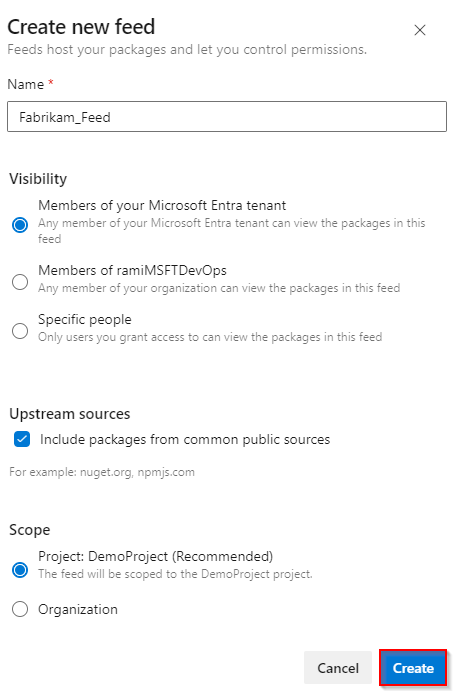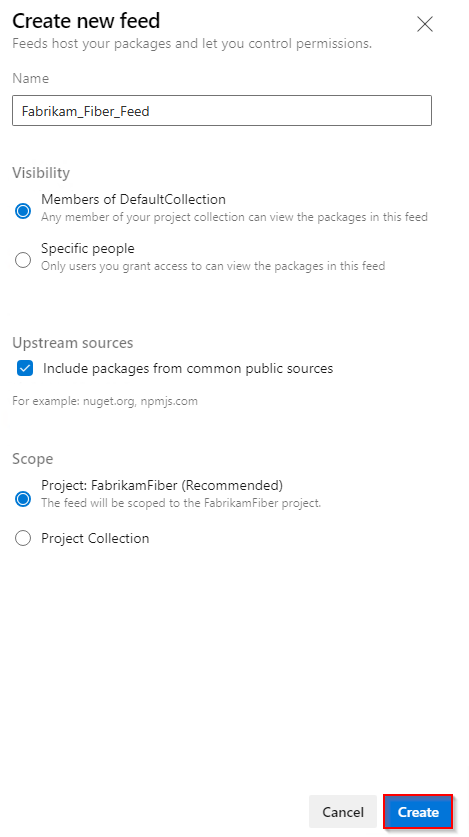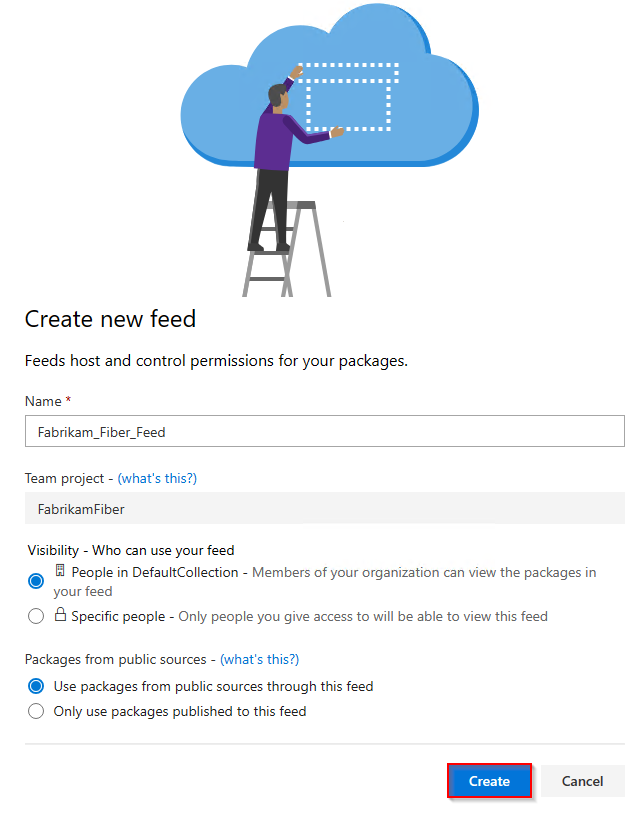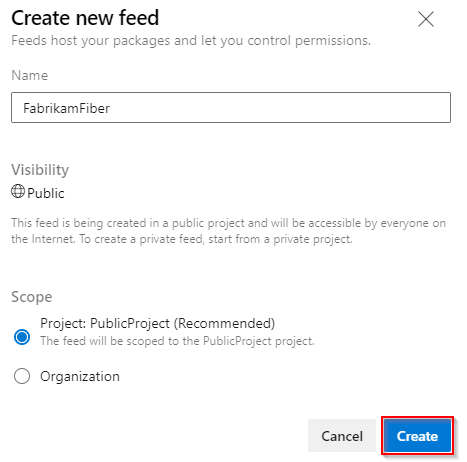What are Azure Artifacts feeds?
Azure DevOps Services | Azure DevOps Server 2022 - Azure DevOps Server 2019
Azure Artifacts feeds are organizational constructs that allow you to store, manage, and share your packages while controlling access. Feeds are not limited to specific package types; you can store various types, such as npm, NuGet, Maven, and Python packages, in a single feed.
Project-scoped vs Organization-scoped feeds
Organization-scoped feeds are accessible and viewable from any project within the organization. Project-scoped feeds on the other hand, are restricted to being viewed solely within the hosting project.
It's important to note that organization-scoped feeds cannot be converted into project-scoped feeds. Furthermore, only project-scoped feeds have the capability to be designated as public feeds. For a detailed comparison between project-scoped and organization-scoped feeds, refer to Feeds scope.
Note
To access a feed in a different organization, a user must be granted access to the project hosting that feed.
Create a new feed
Follow the instructions below and choose the appropriate scope to create a new project-scoped or organization-scoped feed:
Sign in to your Azure DevOps organization, and then navigate to your project.
Select Artifacts, and then select Create Feed.
Enter a descriptive Name for your feed and define its Visibility (who can use your feed). Specify the Scope of your feed, and if you wish to include packages from public sources, mark the Upstream sources checkbox.
Select Create when you're done.

Follow the instructions below and choose the appropriate scope to create a new project-scoped or organization-scoped feed:
Sign in to your Azure DevOps server, and then navigate to your project.
Select Artifacts, and then select Create Feed.
Enter a descriptive Name for your feed and define its Visibility (who can use your feed). Specify the Scope of your feed, and if you wish to include packages from public sources, mark the Upstream sources checkbox.
Select Create when you're done.

Sign in to your Azure DevOps server, and then navigate to your project.
Select Artifacts, and then select New feed.
Enter a descriptive Name for your feed and define its Visibility (who can use your feed). If you wish to include packages from public sources, select the Use packages from public sources through this feed option.
Select Create when you're done.

Public feeds
Public feeds allow you to share your packages publicly with anyone on the internet. Users do not need to be members of your organization, nor do they need to log in to the Azure DevOps portal to access the packages.
Public feeds are project-scoped and inherit the visibility settings of the hosting project. Here are some important points to note about public feeds:
- Public feeds can only be created within public projects.
- Public feeds are not intended to replace existing package management platforms (such as NuGet.org, npmjs.com, etc.).
- Public users currently cannot download universal packages, but all other package types are supported for public access.
Note
All feed views in a public feed are accessible to everyone on the internet.
Create a public feed
Public feeds are project-scoped feeds in a public project. Follow the instructions below to create a new public feed:
Navigate to your Azure DevOps project. Make sure that your project is Public in order to create a public feed. Once there, select Artifacts > Create Feed.

Enter a Name for your feed, and then select Project for the feed's scope. Select Create when you're done.

Delete a feed
Navigate to your Azure DevOps project, select Artifacts, and then select your feed from the dropdown menu.
Select the gear icon
 to navigate to your feed's settings.
to navigate to your feed's settings.Select Delete feed, and then select Delete once more to confirm.

Restore deleted feeds
If you accidentally delete a feed, Azure Artifacts offers a 30-days window to restore it to its original state. After this period, the feed will be permanently deleted. During the recovery window, the feed's name remains reserved, packages are unavailable for download, and write access is suspended.
To access feeds pending permanent deletion, navigate to the feed picker dropdown menu and select the Deleted Feeds tab.
Navigate to your Azure DevOps project, and then select Artifacts.
Select the feed picker dropdown menu, and then select the Deleted Feeds tab.

Select the feed you want to restore, and then select Feed Settings. Select Restore Feed when you're ready.

Permanently delete a feed
A feed pending deletion will still use storage space. To permanently delete your feed before the 30-day period ends, follow these steps:
Navigate to your Azure DevOps project, and then select Artifacts.
Select the feed picker dropdown menu, and then select the Deleted Feeds tab.
Select the feed you want to restore, and then select Feed Settings.
Select Permanently Delete Feed, and then select Delete.
Note
Once a feed is permanently deleted, users will no longer have access to view or restore its packages. The feed's name will become available for reuse 15 minutes after deletion.